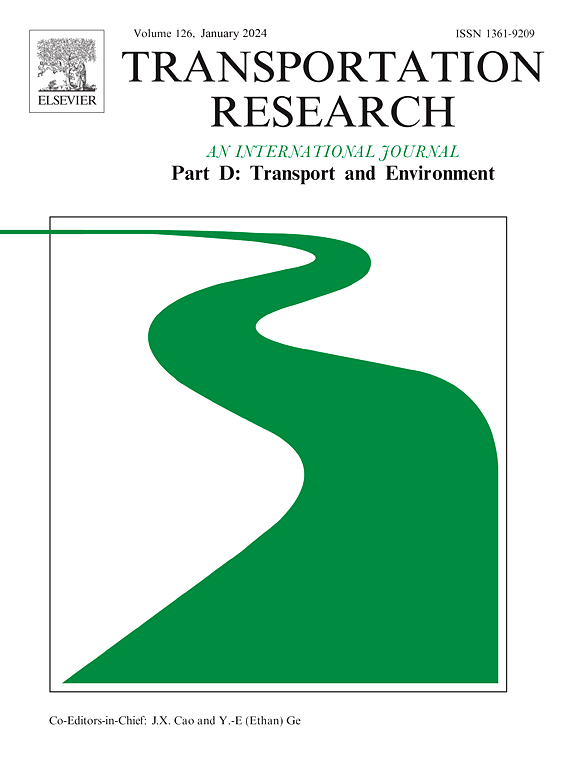Non-linear built environment effects on travel behavior resilience under extreme weather events
IF 7.3
1区 工程技术
Q1 ENVIRONMENTAL STUDIES
Transportation Research Part D-transport and Environment
Pub Date : 2025-04-16
DOI:10.1016/j.trd.2025.104753
引用次数: 0
Abstract
Resilience has been a widely used approach to assessing the response and recovery of transportation systems to various disruptions and stresses, such as extreme weather events. However, limited studies have investigated travel behavior resilience from the demand perspective, and even fewer have delved into its relationships with the built environment. Therefore, using a taxi trip dataset in Xiamen, China, and employing an advanced machine learning method (LightGBM), this study examines the non-linear effects of the built environment on travel behavior resilience during a rainstorm. The findings are as follows: (1) Location and development intensity are the most important variables for travel behavior resilience; (2) Salient non-linear relationships exist between built-environment variables and travel behavior resilience; and (3) Apparent interaction effects exist among some variables, especially between location and others. This study provides valuable insights for policymakers, offering guidance for targeted interventions to facilitate climate adaptation and enhancing resilience.
极端天气条件下非线性建筑环境对出行行为弹性的影响
弹性是一种广泛使用的方法,用于评估运输系统对各种中断和压力(如极端天气事件)的响应和恢复。然而,从需求角度调查旅行行为弹性的研究有限,深入研究其与建筑环境关系的研究就更少了。因此,本研究使用中国厦门的出租车出行数据集,并采用先进的机器学习方法(LightGBM),研究了暴雨期间建筑环境对出行行为弹性的非线性影响。研究发现:(1)区位和开发强度是影响旅游行为弹性的最重要变量;(2)建筑环境变量与出行行为弹性之间存在显著的非线性关系;(3)某些变量之间存在明显的交互作用,尤其是区位与其他变量之间。这项研究为政策制定者提供了有价值的见解,为有针对性的干预措施提供了指导,以促进气候适应和增强抵御能力。
本文章由计算机程序翻译,如有差异,请以英文原文为准。
求助全文
约1分钟内获得全文
求助全文
来源期刊
CiteScore
14.40
自引率
9.20%
发文量
314
审稿时长
39 days
期刊介绍:
Transportation Research Part D: Transport and Environment focuses on original research exploring the environmental impacts of transportation, policy responses to these impacts, and their implications for transportation system design, planning, and management. The journal comprehensively covers the interaction between transportation and the environment, ranging from local effects on specific geographical areas to global implications such as natural resource depletion and atmospheric pollution.
We welcome research papers across all transportation modes, including maritime, air, and land transportation, assessing their environmental impacts broadly. Papers addressing both mobile aspects and transportation infrastructure are considered. The journal prioritizes empirical findings and policy responses of regulatory, planning, technical, or fiscal nature. Articles are policy-driven, accessible, and applicable to readers from diverse disciplines, emphasizing relevance and practicality. We encourage interdisciplinary submissions and welcome contributions from economically developing and advanced countries alike, reflecting our international orientation.

 求助内容:
求助内容: 应助结果提醒方式:
应助结果提醒方式:


